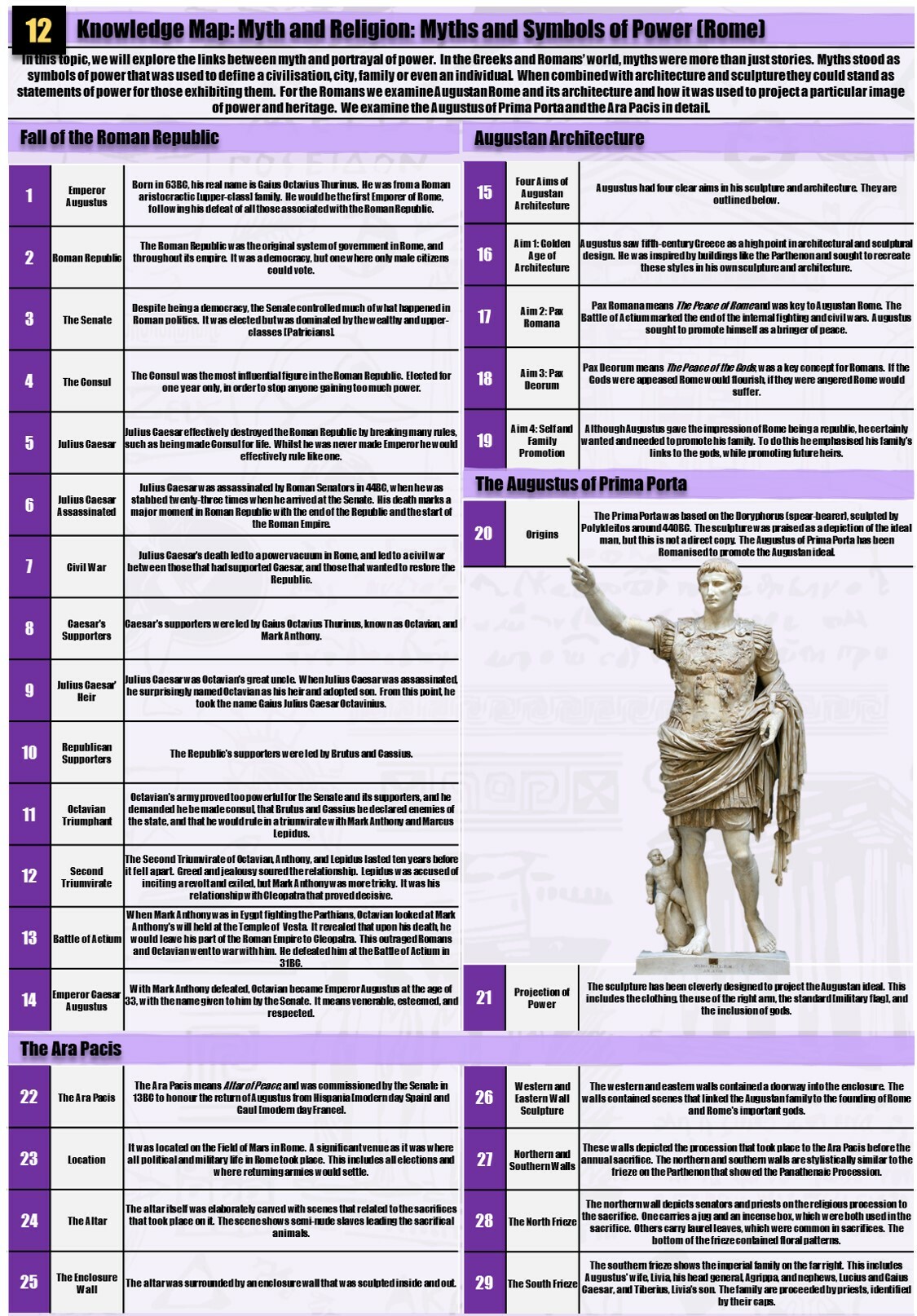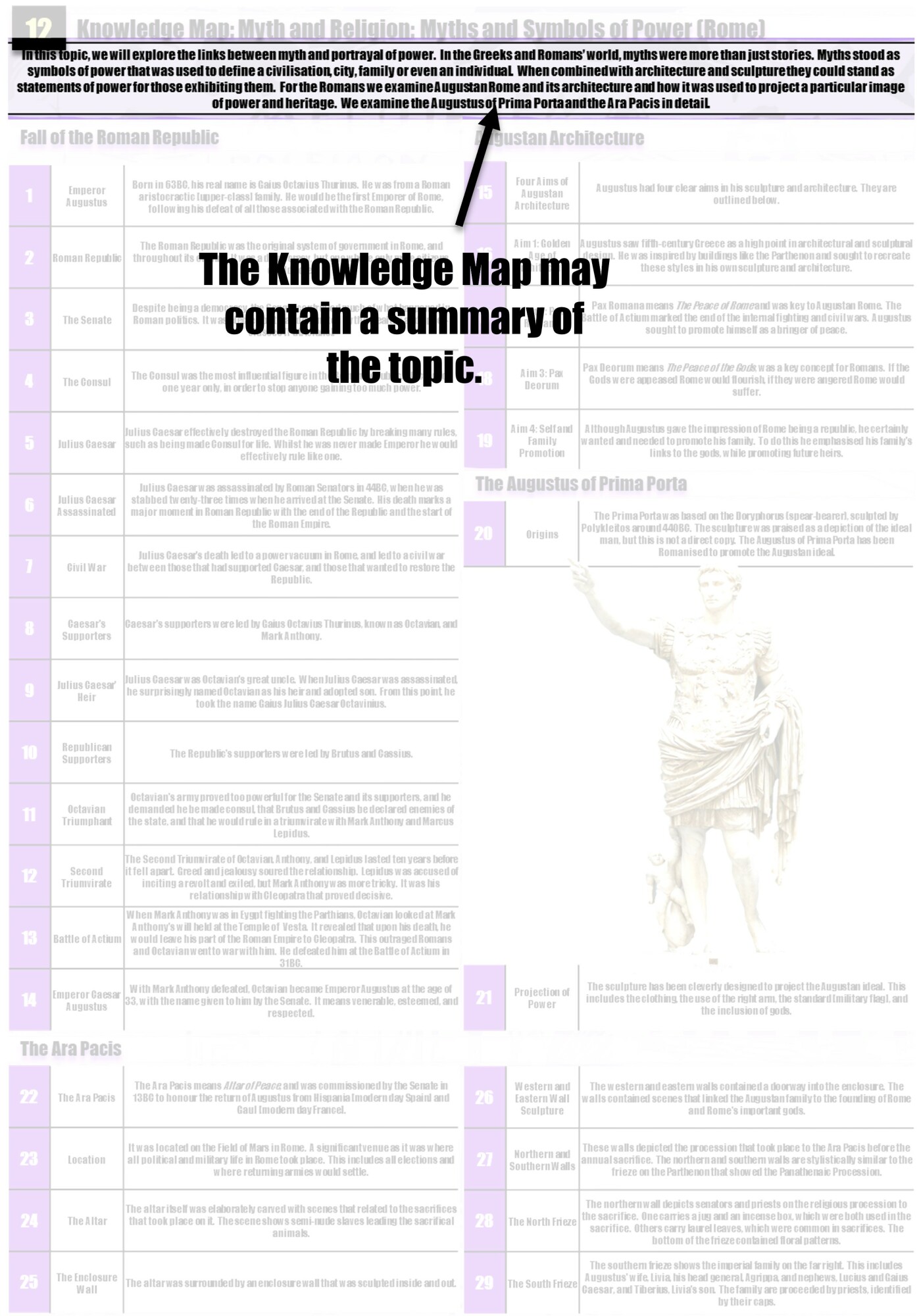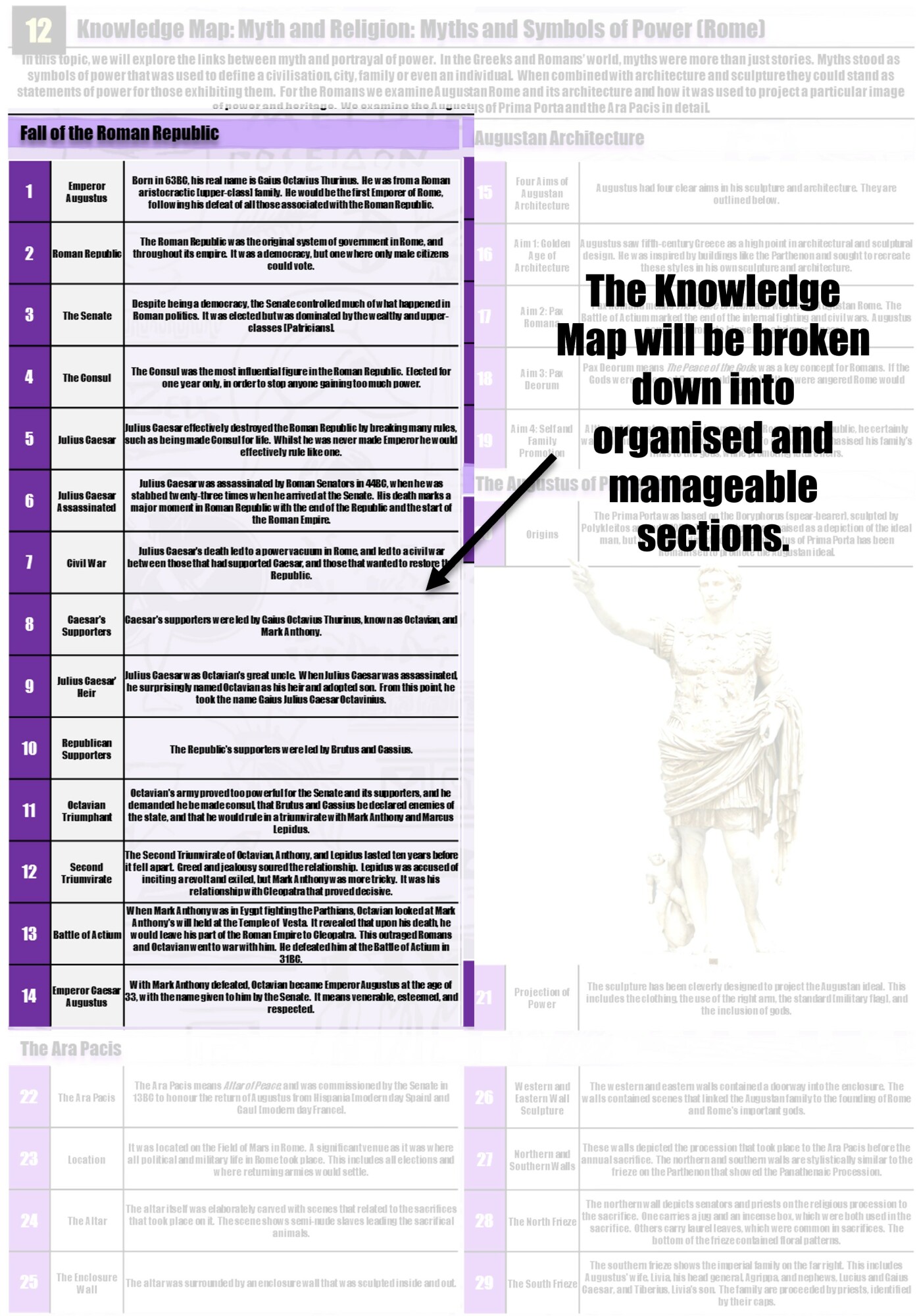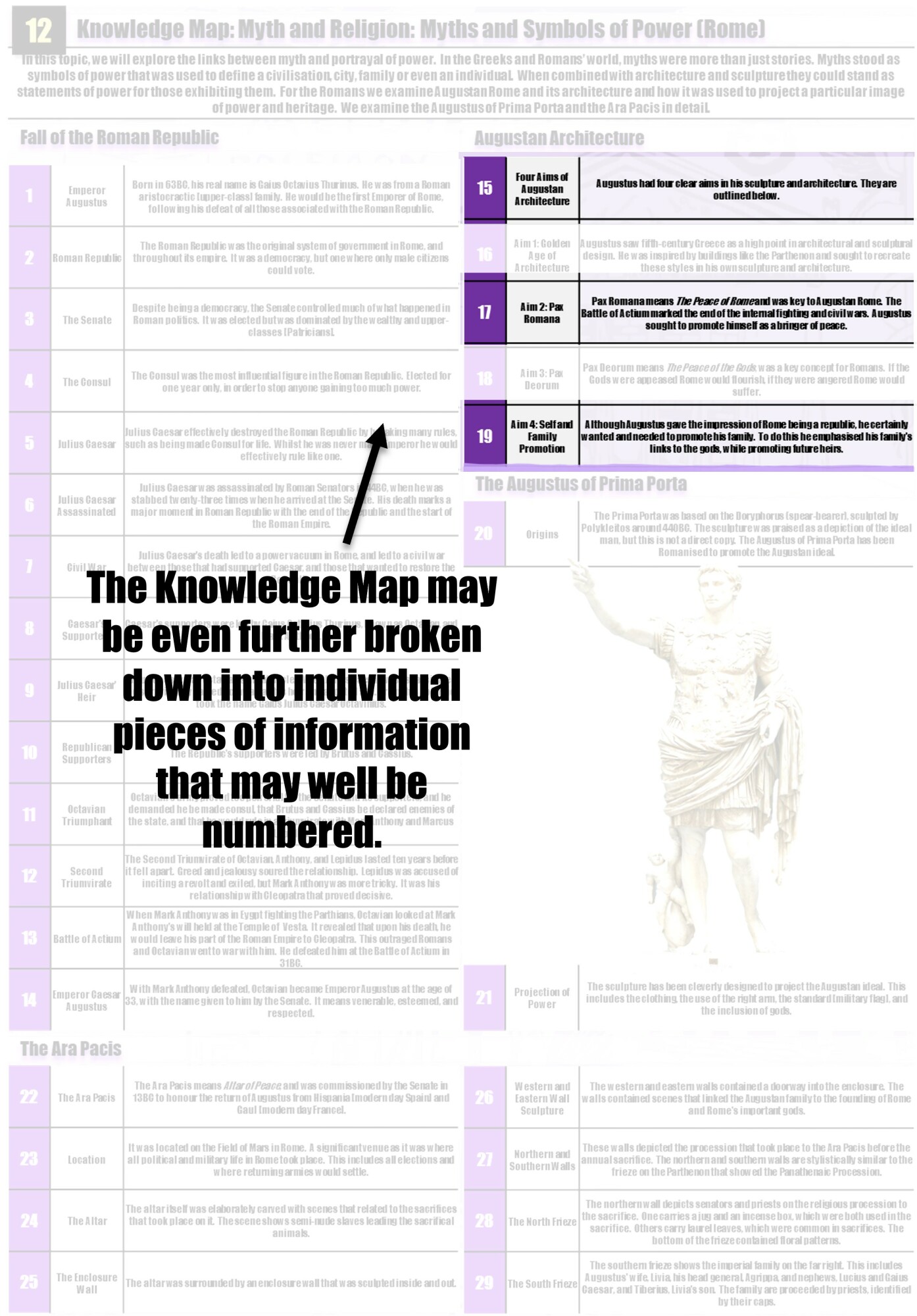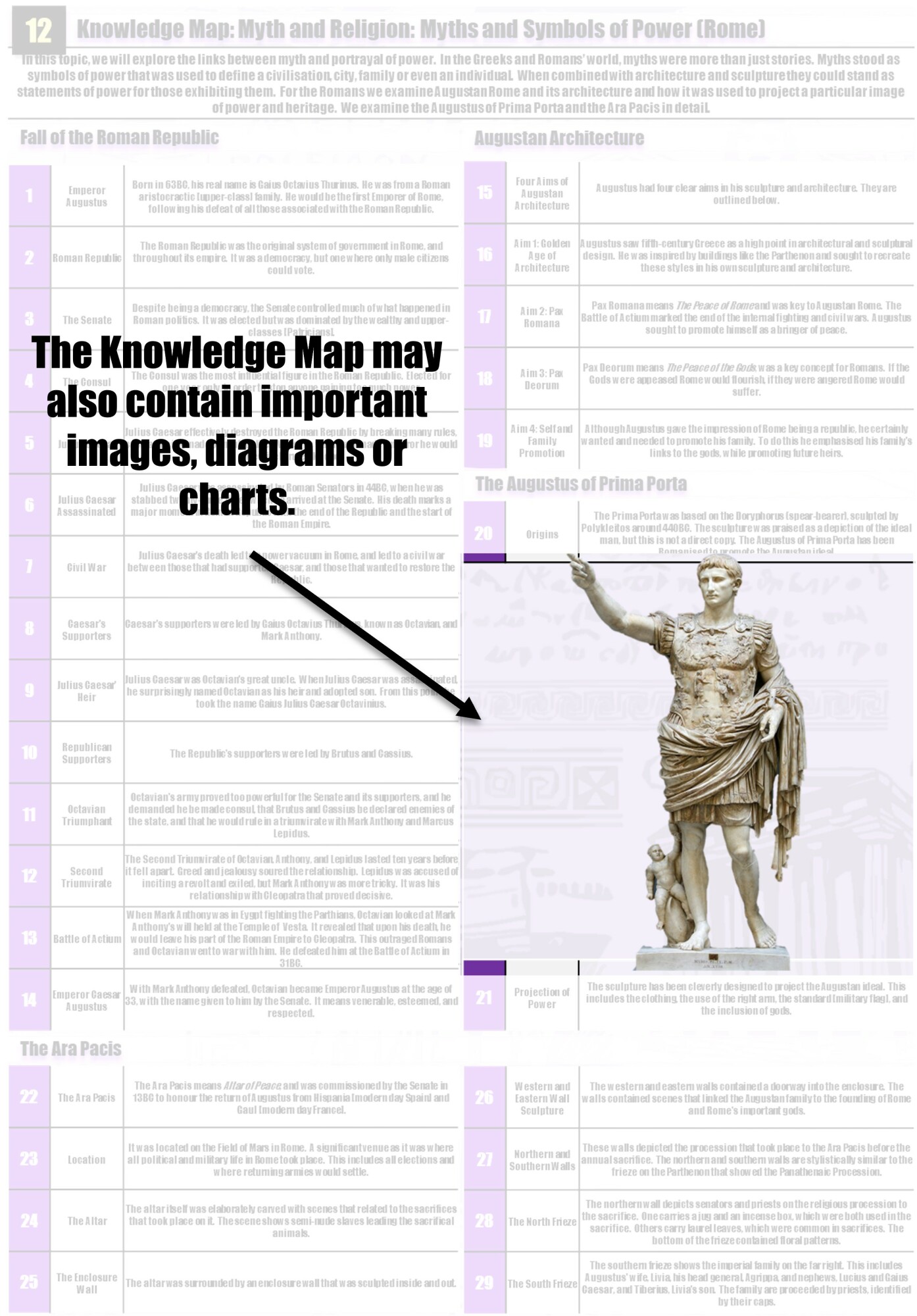What is a Knowledge Map?
What is a Knowledge Map?
A knowledge map is an attempt to highlight the most important content and skills needed to be learnt for a particular topic.
Knowledge maps are a summary of the key facts and essential knowledge that pupils need about a particular topic. It may contain crucial information such as a summary of the content of a topic, the key skills in a topic, or the key vocabulary in a topic. They should be no more than one side of A4 with all the information broken down into easily digestible chunks. What knowledge maps are not is a replacement curriculum or lesson.
Knowledge maps can be a valuable tool for both children, staff and parents. Class teachers are usually the ones who write the knowledge map, to set out their expectations of what pupils should learn about a topic – and to clarify their own thinking around what is important. Pupils will use the knowledge maps to help their understanding of a topic, to revise the topic, or quiz themselves using their knowledge maps to reinforce learning.
And finally knowledge maps are a really clear and easy to understand way for parents to be more aware of what their children are learning at school and thus be able to support them.
How does a Knowledge Map work?
The knowledge map is organised into manageable sections which each containing important content information. Unlike topic summaries, knowledge maps will not follow a set template in terms of style or design. They have to be designed to fit the subject meaning they will look different. However, there are common features to a knowledge map that should be adhered to: information should be organised into manageable sections, key words should be highlighted, and important images and diagrams to the topic should be included.
Below is just an example of knowledge map and how it has been constructed. Please click on the each picture and it will take you through how the knowledge map has been put together.

